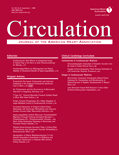Turner syndrome and the Aorta
Turner syndrome is diagnosed in females with a partial or complete absence of one X chromosome. Clinical manifestations are varied and also subtle, however they commonly include:
Aortic disease in Turner syndrome is not very well characterized although there some features that are commonly found in these patients. The aorta is usually dilated in the ascending portion especially at the sinotubular junction. The aortic arch is elongated and usually not dilated. The left subclavian artery can also be aneurysmal. The natural history of aortic disease is poorly understood. Acute aortic dissection is a rare event (1.4%). Most patients with Turner Syndrome who develop an aortic dissection have other associated risk factors such as hypertension, aortic coarctation, and bicuspid aortic valve. In 90% of cases reported in the literature at least one risk factor was identified in Turner Syndrome patients with aortic dissection. Pregnancy is also a known risk factor for aortic dissection in these women.
Patients who have suffered aortic dissections with Turner’s syndrome have had an absolute aortic diameter of 4.5 cm and aortic index of > 2.5 cm/mm2. A stable ascending aortic diameter may not be reassuring since aortic dissections have occurred in patients with a dilated, stable ascending aortic aneurysms.
- short stature
- broad chest with widely spaced nipples
- webbed neck
- cubitus valgus
- congenital lymphedema
- ovarian sex hormone insufficiency
- cardiovascular malformations: bicuspid aortic valve and coarctation (present in 75% of patients)
Aortic disease in Turner syndrome is not very well characterized although there some features that are commonly found in these patients. The aorta is usually dilated in the ascending portion especially at the sinotubular junction. The aortic arch is elongated and usually not dilated. The left subclavian artery can also be aneurysmal. The natural history of aortic disease is poorly understood. Acute aortic dissection is a rare event (1.4%). Most patients with Turner Syndrome who develop an aortic dissection have other associated risk factors such as hypertension, aortic coarctation, and bicuspid aortic valve. In 90% of cases reported in the literature at least one risk factor was identified in Turner Syndrome patients with aortic dissection. Pregnancy is also a known risk factor for aortic dissection in these women.
Patients who have suffered aortic dissections with Turner’s syndrome have had an absolute aortic diameter of 4.5 cm and aortic index of > 2.5 cm/mm2. A stable ascending aortic diameter may not be reassuring since aortic dissections have occurred in patients with a dilated, stable ascending aortic aneurysms.

Moderate Aortic Enlargement and Bicuspid Aortic Valve Are Associated with Aortic Dissection in Turner Syndrome. Report of the International Turner Syndrome Aortic Dissection Registry
Misty Carlson, MD, Nathan Airhart, MD, Leo Lopez, MD, Micheal Silberbach, MD
Circulation. 2012;126:2220-2226.
(Click on image to view the article)
Misty Carlson, MD, Nathan Airhart, MD, Leo Lopez, MD, Micheal Silberbach, MD
Circulation. 2012;126:2220-2226.
(Click on image to view the article)
